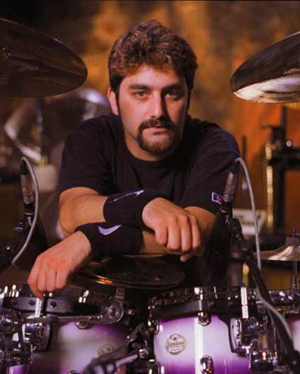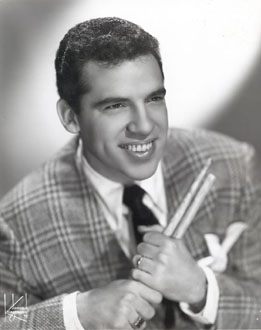Drum Kit /Set - A complete set of drums. This can consists of as many, or as little drums as desired.
Drum - A musical instrument with a hollow body, covered by a tight skin / head on one, or both ends. Used for rhythm by percussionists, these can range from small to very large.
Throne - The stool or seat of a drummer. This is usually a round adjustable padded stool specially designed for behind a drum kit.
Drumsticks - The main accessory to a drum set. Usually made out of wood, these come in pairs, and are used to strike the drums.
Cymbal - Concave brass or bronze plates used to produce high ringing sounds on a drum set. Can be played in pairs, or on their own with a stick.
Snare - Also known as the heart of the drums, the snare is the drum that creates a loud cracking sound. This drum has a set of coiled wires (snare) on the bottom skin of the drum. Tightening these will create a different sound.
Tom Tom - The drums with a certain pitch or tone. These drums produce a different sound depending on the size, and tightness of the drum.
Stand - A three legged upright pole, made to hold different drum hardware. Stands are used for cymbals, snares, toms, tambourines, and anything else needed to be help in place. Usually made out of chrome aluminum.
Wing Nut - A unique bolt designed for the tops of cymbal and other stands on the drum set. These are used to tighten the percussion piece to the stand.
Tension Rod - A screw that tightens the drum hoop onto a drum. These are long and narrow, and allow you to tune your drum by tightening and loosening your skin to a certain tension.
Practice Pad - A drummers best friend! A Practice pad allows drummers to play without making any noise. Usually the same feel as a drum, these are smaller surfaces, that offer the same bounce as a real drum with almost no noise.
Crash Cymbal - A powerful cymbal that emits a loud crashing sound. Used in all types of music, this cymbal ranges in sizes from 14 inches to 21 inches, and can be played loud or soft.
Ride Cymbal - A much larger, and thicker cymbal. This is more of a rhythmic cymbal that produces a higher pitch sound than a crash when played with your stick tips.
Splash Cymbal - A much smaller and thinner cymbal, used for quicker attacks, and higher pitched sounds. Ranging anywhere from 6 inches to 14 inches.
China Cymbal - A uniquely shaped cymbal that looks like it has had its edges folded upwards. This
produces a darker effect sound, used in many styles of music. These can range in all sizes, and is usually played upside down.
Gong Cymbal - A very large and very thick cymbal played with a mallet. Has a much lower tone.
Stack Cymbals - A pair of cymbals stacked on top of each other to creat a unique rhythmic sound. Can be a combination of any two cymbals.
Cowbell - A thick bell origionally used to be hung around a cows neck. However, when struck with a stick, it creates a unique sound. Great for funk grooves, as well as salsa beats.
Wood Blocks - Blocks of wood with a hollow center. These are designed to create a certain note when played. They come in many sizes, ranging in all different notes and sounds.
Chimes - A set of cylendar bells or metal slabs hung together to create a high pitch musical tone. Usually hung in a row, they make a sound when they hit each other. A great mood instrument that adds ambiance and personality to any song.
Djembe - A hand drum made from wood, and covered usually in an animal hide skin. This African drum has a distinct low end sound, that can range in all tones, as the drum can be all sizes.
Conga - Deep wooden hand drum.(deeper and bigger then a djembe) Usually very big, these are used more for rhythm, and played in a lot of salsa, funk, and other latin grooves.
Bongo - A wooden tuned drum played with your hands. Like the djembe, these drums usually come in pairs, and are a little more rhythmic than the Djembe.
Timbales - Two drums like the bongo, but a little wider and longer. These are played with drum sticks instead of your hands, and are a great accessory to any kit.
Hi Hat
- 2 cymbals stacked on top of each other that open and close. These are played closed for short high end hits, and opened for lengthy sloshy sounds. These sit on a hi hat stand.
Hi Hat Stand - An upright stand meant to hold the Hi Hat cymbals. This has a unique design to it, with a pole in the center that is connected to a foot pedal that allows you to open and close the hi hats.
Bass Drum - Usually the biggest drum. This drum creates a low punchy sound that you can usually feel. This drum is usually played with your foot hitting a pedal.
Bass Drum Pedal - The foot trigger that strokes the bass drum. This can be used on any percussion instrument, like a cowbell, or wood block. These are driven by either chain, belt, or direct drive.
Double Pedal - Similar to a single bass drum pedal, this has 2 foot triggers that are connected to two beaters that can hit the bass drum alternatively. Allowing for faster strokes.
Bell - A very thick cymbal smaller than most, in a large arc shape. These produce a very high pitch note that carries its note for a long time.
Cymbal Bell - The part of the cymbal that has the most arc. Located right in the center of the cymbal, striking this will give you a higher pitch “ting” then the rest of the cymbal.
Drum Skin - The piece that gets strung overtop of the drum. Also known as a head, this is what you hit to make the drum sound. Can be coated, clear, doubly ply, made from animal hide, and more. These are placed over the drum, and tightened to certain tensions to create different pitches.
Drum Head - See Drum Skin
Drum Module - The main brain on electronic drum sets. This is what stores all the drum voices, beats, metronomes, and songs. Usually what costs the most on a E-drum set.
E-Drums - Electronic Drums. Virtual pads that are full of sensors that when struck, send a signal to the drum module and create sounds. Can be played as single drums, or whole kits.
Effects Cymbal - Cymbals with different designs and shapes to create unique sounds different from regular cymbals. There are a lot of different effect cymbals out there.
Drum Rims - Circular rings that cover the rim of the drum. These are places over the drum skin, and are used to hold them on. By tightening these, you push down the skin (head), causing it to become more tense, and changing its sound.
Hoops - Like a drum Rim. These can be wood, or metallic.
Rack - Large stands that surround the drum set, allowing for easy connectivity of your drums and cymbals. These are very common for bigger drum sets, and usually eliminate the need for most drum stands.
Shakers - Ranging in different sizes and shapes, these are rhtymic tools. Hollow in the center, these are filled with small particles, sometimes sand or beans, that give it a unique feel when shooken.
Tambourine - An instrument with a set of small cymbals stacked on top of each other. When hit, it creates a high pitch, fast note that compliments most music. Can be hand held, or mounted for drum set playability.
Piccolo Snare - A smaller drum that is snared. This drum is usually a lot thinner, and offers a higher pitched snare sound when struck. Produces a very tight sound.
Firecracker Snare - Like a Piccolo snare, this drum is smaller in diameter, but larger in depth. Usually tuned very tightly, this also produced more of a high pitched “Cracking” sound.














 The Start of Buddy Rich’s Career
The Start of Buddy Rich’s Career






